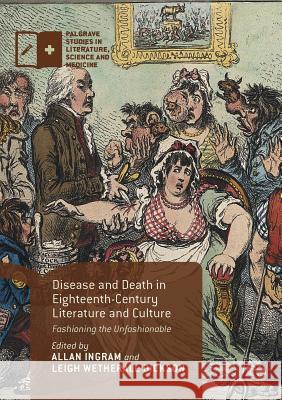Disease and Death in Eighteenth-Century Literature and Culture: Fashioning the Unfashionable » książka
topmenu
Disease and Death in Eighteenth-Century Literature and Culture: Fashioning the Unfashionable
ISBN-13: 9781349955688 / Angielski / Miękka / 2018 / 290 str.
Kategorie:
Kategorie BISAC:
Wydawca:
Palgrave MacMillan
Seria wydawnicza:
Język:
Angielski
ISBN-13:
9781349955688
Rok wydania:
2018
Wydanie:
Softcover Repri
Ilość stron:
290
Waga:
0.36 kg
Wymiary:
21.01 x 14.81 x 1.6
Oprawa:
Miękka
Wolumenów:
01
Dodatkowe informacje:
Bibliografia
Wydanie ilustrowane
Wydanie ilustrowane











